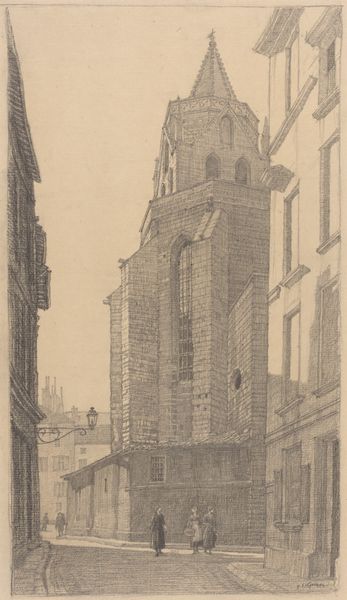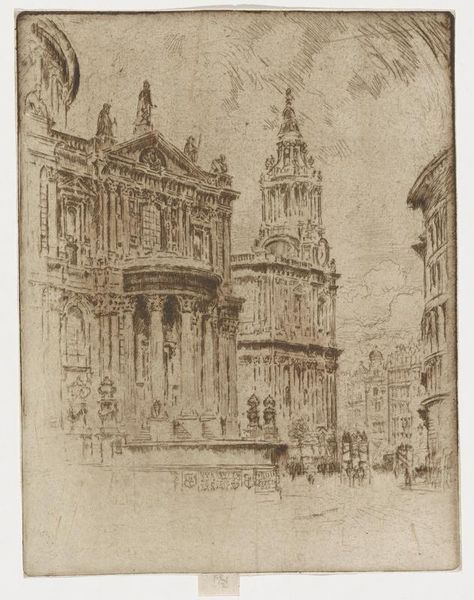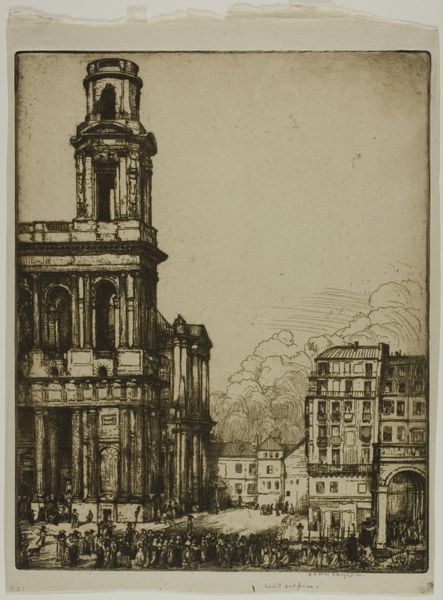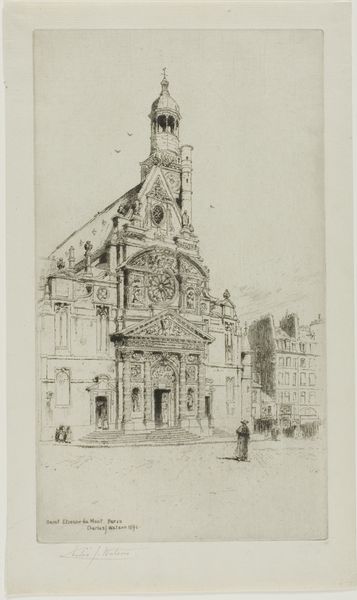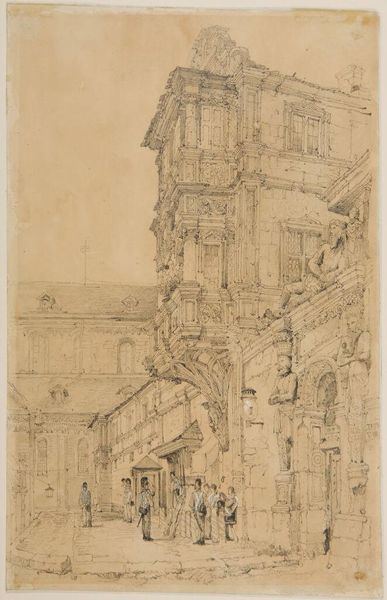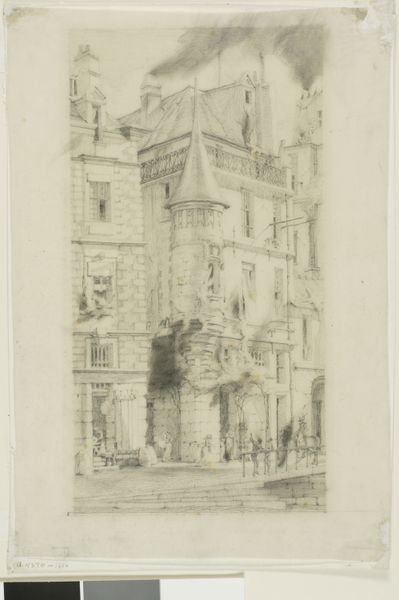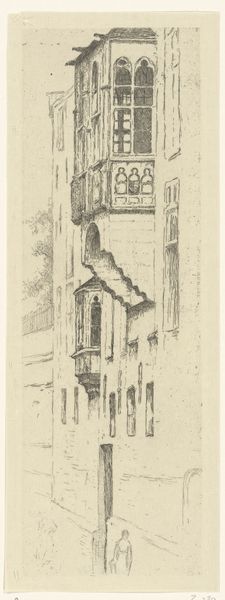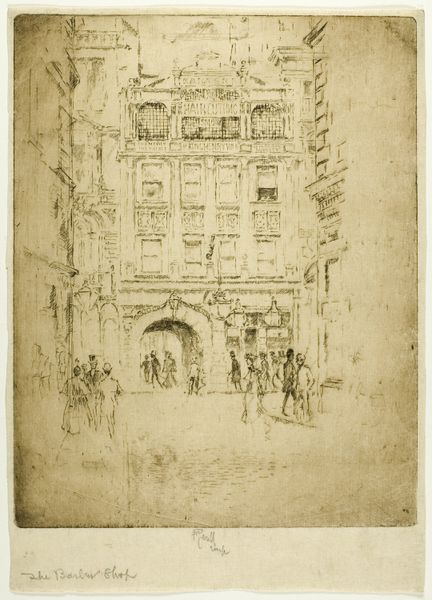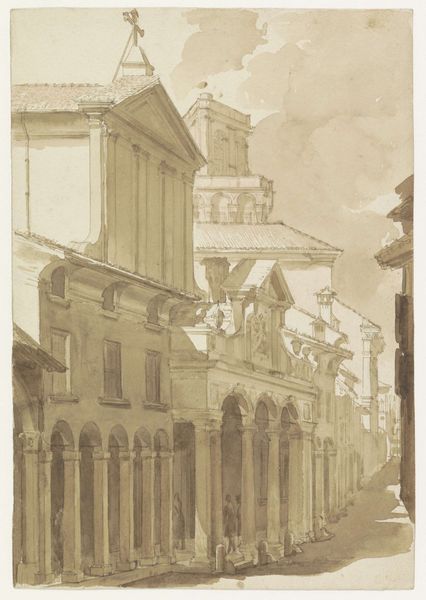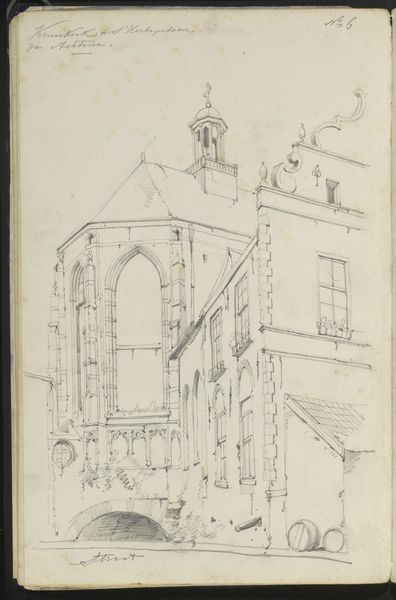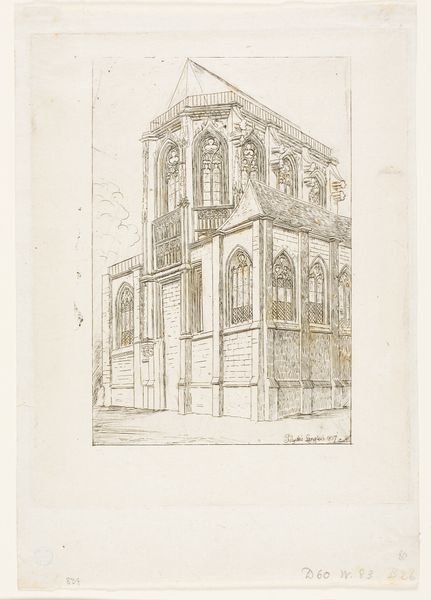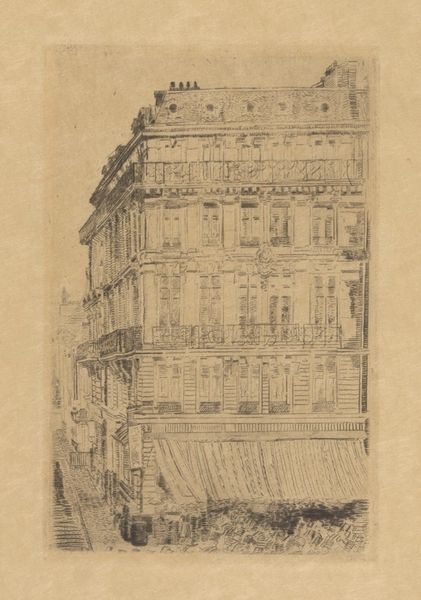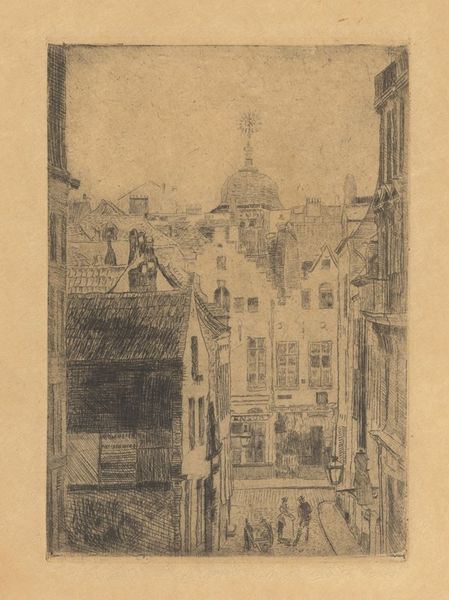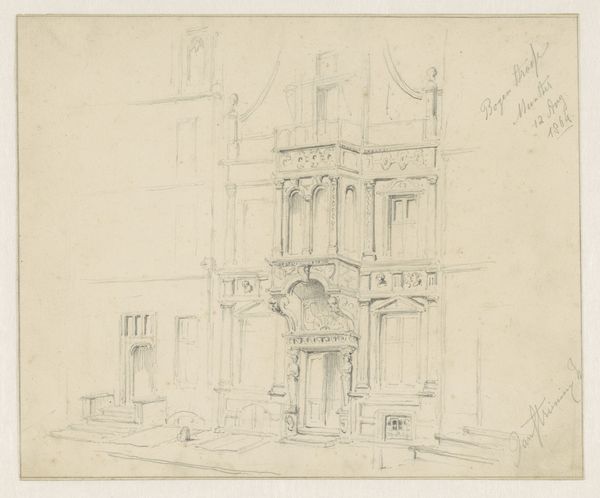
The Facade of S. Sulpice Near Completion - to the right, a cart in front of a no longer existing house; in the foreground onlookers 1743 - 1747
0:00
0:00
drawing, etching, architecture
#
drawing
#
baroque
#
etching
#
etching
#
cityscape
#
history-painting
#
architecture
Dimensions: 405 mm (height) x 230 mm (width) (bladmaal)
Curator: I find the ochre monochrome of this etching so striking. It almost feels like looking at faded memories of a grand historical event. Editor: And what exactly are we looking at here? Curator: This is Georges-François Blondel's "The Facade of S. Sulpice Near Completion," created between 1743 and 1747. It’s currently housed here at the SMK. It captures the construction phase of the Saint-Sulpice church, offering us a peek into 18th-century Parisian life. Editor: The scaffolding really emphasizes the labor involved in erecting these monumental structures. It makes me consider the lives and the skillsets of those constructing this marvel and their day to day experiences. I find myself curious about the procurement of raw materials, their cost, transportation to this location, and the workers involved. Curator: It is hard to look past the raw ambition of this kind of religious building project but if we dig a little deeper, we can see more than simple religious architecture, but class and power at play too. In terms of historical context, the church stands—quite literally—as a symbol of Catholic resurgence and absolutist power in a city rife with social stratification. It’s impossible to not read it through the lens of wealth and its distribution at the time, something this etching unintentionally underscores by showcasing the "onlookers" on its completion, many presumably disenfranchised by its very existence. Editor: The scale of Saint-Sulpice is undeniably awe-inspiring, but what’s even more captivating to me is that foreground scene. The workers, the equipment—their very presence humanizes the grand architectural design, doesn’t it? Curator: Absolutely! The work presents us a complex tableau of ambition, labor, faith, and its observers, begging for exploration of how each intersect and interact with one another. This allows us to think of how gender or race would influence the reception of this symbolic structure being unveiled in a growing society. Editor: Well, considering all of these insights, I am finding the way Blondel has depicted this church an enriching viewing experience. Curator: Indeed, it allows a fascinating delve into art, culture, labor, and historical social narratives.
Comments
No comments
Be the first to comment and join the conversation on the ultimate creative platform.
